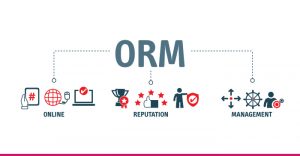
Have you ever wondered why everyone is constantly striving for a top spot on Google ranking? Why is it so important to rank high on Google, after all?
Simply put, the position of a page in the search engine placement results have a profound impact on how much traffic it will generate. Generally speaking, most individuals will skip the very first 10-15 listings, with even fewer clicking through to the second page. Which is why the position of your website in search results (for certain search queries and keywords) is essential to your overall digital performance with organic visitors.
In lieu of this, how can you guarantee that your target keywords are consistently given the greatest possible search engine placement? How will your website fare among hundreds of billions of webpages in the search index?
We will explain all this and more in today’s post on search engine positioning, how it differs from Search Engine Optimization (SEO), and why your organization needs to optimize this process. Let us begin!
6 STRATEGIES ON IMPROVING SEARCH ENGINE POSITIONING: HOW TO RANK HIGHER IN SERP
1. Search Engine Positioning Favors Content for Humans, not Crawlers
Recently, an increasing number of bloggers and content producers have returned to the traditional way of SEO and search engine positioning, where words used to drive query results took precedence over the true attributes of engaging, meaningful content. If this describes you, it is past time to alter your attitude about writing.
Many individuals are still avoiding long-tail keywords in favor of trying to deceive search engines. Search spiders are little more than scripts; they do not purchase items, communicate with you about social networking sites, and will never become a loyal customer. When you are in the process of writing, disregard the existence of search engines such as Google momentarily. It is better to develop content that will benefit someone and provide real value. This is referred to as SEO-optimized copywriting.
Surprisingly, when you prioritize the needs and interests of your audience above everything else, you will actually generate valuable content that search engine crawlers will reward, since search engine positioning systems follow consumer trends. Simultaneously, you will enhance the overall customer experience and establish better relationships with your client base.
2. Use Internal Links
Internal links are hyperlinks inside your website’s pages or articles. Internal links are critical because they assist visitors in navigating your website, construct an information hierarchy, and distribute the link’s ‘equity’. If you are writing an article on how to create an eBook, it is only natural to include an internal link to a page about how to publish an online course.
The more links referring to a certain page on the website, the more “ranking power” that page receives. It’s effectively a hyperlink to your own website from inside. Internal linking is advantageous especially when it comes to service or product pages on your website.
On the other hand, a website does not get as many natural hyperlinks as blog postings. To help your webpages get a higher ranking, you may add more inbound links to these pages towards the footer, as a form of search engine placement. “Anchor text” is also a critical component in creating the greatest possible internal connections.
3. Use Meta Titles and Descriptions
Meta tags are textual snippets that aid in the description of a page’s content. The term “meta title” refers to the headline that appears on search engine results pages, and it is the first step to good search engine position. The term “meta description” refers to the text that appears underneath the title.
A good meta title will include your target keywords (or a close version of them), preferably at the beginning. It’s wise to keep meta titles between 50-60 characters in length and to add your brand’s tagline or name at the conclusion. The primary objective of adding a meta description to your content is to encourage a reader to enter a webpage while still providing an accurate summary of what they will find there. Additionally, organically including keywords into your meta description is a smart strategy to optimize your content.
To create an effective meta description, just explain the page content and concentrate on what the user is looking for. Make it actionable by including statements such as “continue reading to discover more.” Meta descriptions should be between 80 and 160 characters in length. Never undervalue the significance of Meta tags, such as website titles. They are often the first thing customers see, while assisting search engines in comprehending your material.
4. Keyword Research
Keyword exploration for your content enables you to understand what users are searching for, rather than just generating material and hoping people will find it. When doing keyword research, you need to consider some vital data items.
The first is the volume of searches. This indicates the number of times a certain term is searched for in a given month. Then there’s the matter of keyword difficulty. This is the degree to which a term is challenging to rank for, and it is often quantified on a scale ranging from 1 (simple) to 100 (complex). There are several precise metrics, such as cost-per-click (CPC), that indicate how much users spend per click on Google Ads for a given term. The highest-ranking keyword is the one which gets searched frequently, has a least keyword difficulty, and a high cost-per-click, indicating that it is useful to companies and is likely to generate income.
When selecting keywords, you should look for one primary keyword per page or article, followed by a range of secondary keywords connected to the primary keyword. When you have a distinct focus keyword in mind, it becomes much easier to choose an effective meta titles, meta description, and alt tags, since they can all be centered on your focus keyword.
Secondary keywords serve as synonyms for the primary keyword. Including them naturally (and sparingly) in your writing helps you rank for a range of keywords that all have a similar search query to your main keyword.
5. Google’s Core Web Vitals
Google’s Core Web Vitals are measurements that enable you to identify how a person interacts with a page. The “stronger” your Core Web Vitals are, the more optimized the consumer experience will be on your webpage and the higher your page’s likelihood of ranking well in search engines.
Core Web Vitals measures page-launching performance and reliability, the ease with which a page may be interacted with, and the visual integrity of a page from the user’s viewpoint. This information is later combined to gauge its search engine position. It is critical to monitor your performance in relation to Core Web Vitals. The Google Search Console allows you to monitor your website’s Core Web Vitals performance.
6. Re-optimize Existing Content
Do you have a backlog of content from years gone by that isn’t receiving the correct amount of attention or nearly enough visitors? The wonderful thing about having a web page is that it is completely modifiable any time you want. This also means you can quickly improve the traffic to current content by re-optimizing it.
There are a few methods for rejuvenating material in order to give it a fresh lease of life in the rankings. One might begin by using additional keywords and then lengthening certain postings. Doing so helps you reorganize the order of themes inside an article. This is an amazing way to really use the existing content on your website, yet adhering to contemporary standards of search engine optimization.
The Bottom Line
The better your search engine positioning, the more organic visitors your website will have. The more focused organic traffic your website receives, the more prospects, conversions, and sales your website will generate. It is like a chain reaction that will ultimately benefit your website’s search engine positioning.
At One Content Pro, we offer you the best content creation and search engine optimization services to ensure enhanced visibility, higher search rankings, and improved search engine positioning. Let us create a winning copy that will storm the search engine results and get you an enviable spot on the searches. Call us for fresh ideas, and let us help you drive content performance and capture organic traffic.








29 Comments
It’s an awesome piece of writing designed for
all the online viewers; they will obtain advantage from it I am sure.
my blog Free Sample Templates
Good day! I know this is kinda off topic however , I’d figured
I’d ask. Would you be interested in trading links or maybe guest writing a blog article or vice-versa?
My site discusses a lot of the same subjects as yours and I think we
could greatly benefit from each other. If you might be interested feel free to send me an e-mail.
I look forward to hearing from you! Great blog by the way!
I don’t think the title of your article matches the content lol. Just kidding, mainly because I had some doubts after reading the article. https://www.binance.info/zh-TC/join?ref=W0BCQMF1
atorvastatin 10mg price buy atorvastatin 10mg generic order lipitor 40mg
ciprofloxacin 500mg drug – myambutol 1000mg ca buy augmentin 1000mg without prescription
order ciprofloxacin pill – buy cephalexin 250mg buy augmentin without prescription
ciprofloxacin pills – ciplox pill order erythromycin 250mg sale
how to get flagyl without a prescription – amoxil over the counter azithromycin 500mg over the counter
buy ivermectin 2mg – axetil usa tetracycline price
generic valtrex 1000mg – buy nemasole generic generic zovirax 400mg
acillin us amoxil tablet amoxicillin canada
buy metronidazole 200mg generic – order terramycin cost zithromax
order furosemide 40mg – cheap tacrolimus buy capoten 120mg without prescription
oral glycomet 500mg – bactrim 960mg pills lincomycin 500 mg cost
zidovudine 300mg oral – avapro where to buy order allopurinol 100mg online cheap
buy clozapine pill – buy quinapril 10mg generic famotidine 20mg usa
Can you be more specific about the content of your article? After reading it, I still have some doubts. Hope you can help me.
quetiapine over the counter – sertraline for sale online purchase eskalith pill
order clomipramine 50mg without prescription – purchase amoxapine generic order sinequan 25mg sale
order hydroxyzine 25mg without prescription – nortriptyline 25 mg cheap order endep 10mg
buy augmentin 1000mg for sale – pill ethambutol 600mg brand cipro 500mg
amoxicillin ca – order duricef generic order ciprofloxacin 500mg pills
Your point of view caught my eye and was very interesting. Thanks. I have a question for you.
cleocin 300mg for sale – monodox price cheap chloramphenicol
ivermectin 6mg otc – ivermectin 12mg how to buy cefaclor
order albuterol inhalator online cheap – cost theo-24 Cr 400 mg theophylline generic
buy methylprednisolone 16 mg online – fml-forte over the counter azelastine 10ml over the counter
clarinex order – ventolin 4mg cheap buy ventolin 4mg inhaler
how to buy glyburide – glucotrol canada cost dapagliflozin